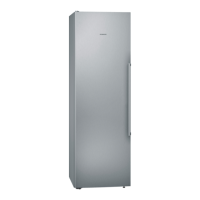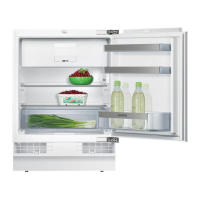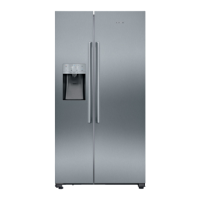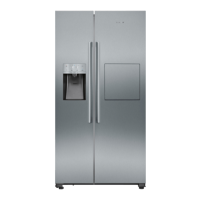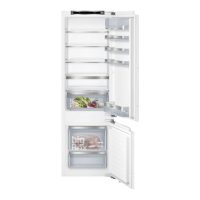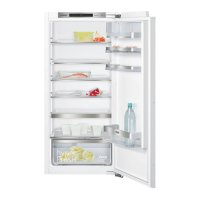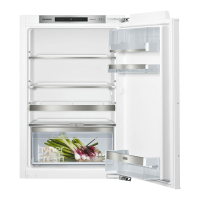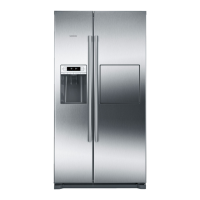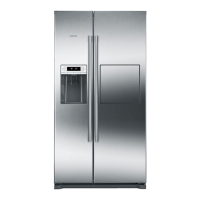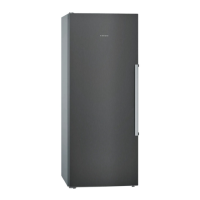
Do you have a question about the Siemens iQ500 KS36VAXEP and is the answer not in the manual?
| Type | Freestanding |
|---|---|
| Energy Efficiency Class | E |
| Noise Level | 39 dB |
| Climate Class | SN-T |
| Dimensions (HxWxD) | 1860 x 600 x 650 mm |
| Reversible Door | Yes |
| Number of Shelves | 7 |
| Door Hinge | Right |
| Door Material | Glass |
| Total Net Capacity | 346 liters |
Read manual carefully, keep for reference, do not connect if damaged in transit.
For chilling food in private households and enclosed domestic environments up to 2000m.
Children 8+ and persons with reduced abilities may use if supervised.
Warning: High weight may cause injury. Do not lift alone.
Incorrect installation is dangerous. Ensure proper earthing and accessible plug.
Avoid moisture ingress, extreme heat/humidity. Do not use steam cleaners.
Warning: Damaged appliance or cord is dangerous. Never operate.
Packaging is recyclable. Sort components by type for separate disposal.
Optimize installation and usage for reduced power consumption.
Verify all parts are present and check for transport damage after unpacking.
Ensure adequate ventilation, avoid heat sources, and check floor stability.
Follow the enclosed installation instructions for proper setup.
Remove protective materials and transit bolts before initial operation.
Insert the mains plug into a nearby socket and check connection.
An overview of the various parts of your refrigerator.
Learn to configure functions and monitor operating status via the control panel.
Instructions on how to remove and re-insert shelves as needed.
Guidance on storing bottles securely on the dedicated bottle shelf.
Tips for storing fresh fruit and vegetables in the container.
Adjust air humidity for optimal storage of fruits and vegetables.
Proper storage for butter and hard cheese within the compartment.
How to remove and reposition door racks.
Instructions for moving height-adjustable door racks using side buttons.
Information on using original accessories designed for your appliance.
Press the power button to start the appliance and begin cooling.
Allow time for temperature stabilization before loading food.
Press the power button to turn off the appliance.
Use the +/- buttons to adjust the desired temperature in the refrigerator compartment.
Cools the refrigerator compartment as cold as possible for rapid chilling.
A warning tone sounds if the appliance door remains open for too long.
Guidance on storing various food types in the refrigerator.
Tips for storing fresh food, covered items, and avoiding the back wall.
Learn about the different temperature zones within the refrigerator.
Checks if the refrigerator compartment reaches the recommended safe temperature.
Condensation and frost on the rear panel defrost automatically.
Switch off, disconnect, remove food and accessories before cleaning.
Clean the appliance interior using mild detergents and a soft cloth.
Regularly clean the condensation channel and drainage hole for proper drainage.
Instructions for removing shelves and other fittings for thorough cleaning.
Instructions for removing shelves, door racks, and containers for cleaning.
Perform a self-test to check the appliance's functionality.
Steps for safely preparing the appliance for storage or decommissioning.
Guidelines for environmentally friendly disposal of used appliances.
Information on how to contact support for queries or repairs.
Locate and note your appliance's E-Nr. and FD numbers for service.
Find technical data like refrigerant and capacity on the rating plate.
